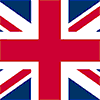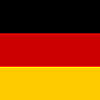You ask, we answer: farewell to animal welfare chicken
Something is about to change at Green Petfood: over the course of this year, many of our products with animal welfare chicken will be phased out. We are also going to be incorporating other protein sources in our range, including conventional meat sources. Since this topic raises so many questions, we've answered some of them for you.
What exactly is changing at Green Petfood?
Why can't you continue using animal welfare chicken?
The truth is that not enough people were buying our products with free-range chicken. In addition, there are currently challenges affecting the overall market for free-range products: national and international effects of the Ukraine war, the aftermath of the pandemic, and rising inflation. All these factors have influenced the availability, quality and pricing of our raw materials. This has led to increasing costs combined with decreased purchasing power for our customers. These issues all contributed to our decision.
Why didn't you introduce organic produce?
Why isn't the FairCat wet food changing?
Wet and dry food production involves different processes and raw material requirements. In wet food production, we currently have other conditions that allow us to continue using chicken from species-appropriate husbandry. For example, here the cuts of meat are processed directly and without prior drying. As a result, we do not have to make any changes to our wet food products at the moment.



